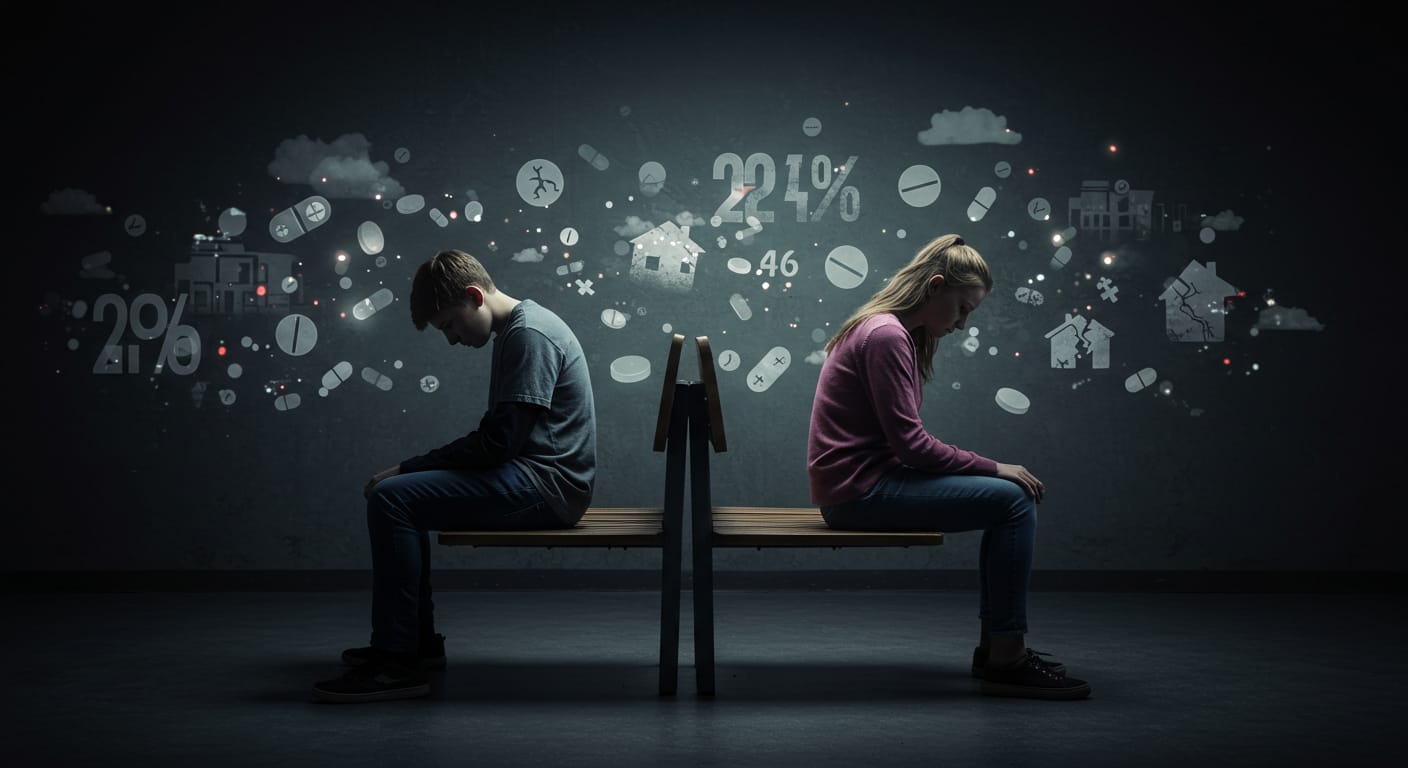Do You Know the Statistics on Teenage Depression?
When should you be concerned about your child’s “dark mood”?
Still blaming it on hormones or puberty?
There’s a huge difference between being a typical moody teen and experiencing teenage depression. And the numbers are telling:
-
Suicide is the third leading cause of death among teens in the United States.
-
According to TeenHelp.org, 10 to 15% of U.S. adolescents suffer from clinical depression.
-
More than 1 in 5 teenage girls report persistent feelings of sadness and hopelessness.
You cannot afford to ignore the signs.
Know the Causes Behind the Statistics
Many teens suffering from depression share common experiences:
-
Neglect at home
-
Substance abuse
-
Abandonment or absent parents
-
Exposure to street life, pimps, drugs, and human trafficking
Girls are especially vulnerable, with higher reported rates of mental illness and suicidal ideation. Many teens—especially those known as latchkey kids—raise themselves while parents are physically or emotionally absent.
Left alone to navigate their emotions, responsibilities, and dangers, these youth grow up too fast, hardening their innocence and often falling prey to a cruel world.
“When you feel worthless, exploited by everyone—you stop caring about yourself, let alone others.”
The Wound of Abandonment
Abandonment is not just emotional. It’s developmental trauma.
Children left to survive on their own are easy targets for:
-
Street gangs
-
Substance dependency
-
Physical and sexual exploitation
-
Long-term emotional disorders
The stress of daily survival, mixed with poverty and lack of nurturing, can lead a child down a path of deep despair.
Teenage Depression: We Can’t Stay Silent
Every day, a teen makes the tragic decision to end their life.
We must ask:
What are we doing to prevent this?
If you’re a parent or teacher, you are the front line. Collaboration between educators, caregivers, and mental health advocates is vital. Talking openly about depression, suicide, and emotional health saves lives.
“Suicide is a silent destroyer.”
We must speak louder than the silence.
Improving Awareness: A Shared Responsibility
So, how do we improve awareness and change these statistics?
-
Hold regular mental health discussions in schools
-
Train teachers and parents to spot the warning signs
-
Provide teens with safe spaces and mental health support
-
Remove the stigma around depression and suicide
-
Invest in after-school programs and community mentorship
Your Turn: Leave a Comment
What do you think needs to change?
-
Have you witnessed warning signs in your teen or student?
-
What support do you think teens are missing today?
-
How can we better reach at-risk youth before it’s too late?
🗨️ Leave your thoughts below and help start the conversation.
Our teens are counting on us.



10%? This is something that I did not know. Thanks for keeping us informed on the subject!
Teens are the worse group to me that have to deal with depression it’s like their transition from kids to adults and some aren’t ready or prepared with the way the world is. This makes me feel so bad for them. I want there to be more organizations to help them transition and not feel so alone
Kita, I thing changes for teen will come eventually it will take lots of pounding on doors.
I had no idea, I suddenly feel like there is so much I don’t know about teenagers. While my son is almost 11 I feel overwhelmed at the thought of all of the things I don’t know.
Mini “MimiCuteLips” Green, It can be overwhelm at times but you need to know there are a lot of resources available now online in library.
I did not know the statistics but as a person who suffered from depression in my teen years, I am not surprised. I always make myself available to the teens in my life for this very reason.
thanks for the info. I didn’t know.
I have a 13 year old. You know they are always bored, or wish for this or that. I try to make sure he is a good head space everyday because he suffers from Type 1 diabetes. I try to make sure he feels supported and well. We also allow him to go on a lot of adventures. We like to make sure he has things to look forward too.
Aisha Johnson Adams, YOU ARE DOING A GOOD jOB raising, observing and making sure his comfort is a priority.
I feel like that percentage may be higher, especially when it comes to urban youth. I have so many students who cannot even focus in school behind “life”. I know they are depressed. This is a must-read for parents!
LaQuisha, It may be higher for urban youth because a-lot of African American Teens Parent don’t normally seek out help especially for Mental Illiness.
Thanks for the information. I think a lot of parents aren’t aware of how prevalent depression is among teens
Yikes, this is so scary! My kids are still little so I have some time to buy to really get to understanding teenagers and meeting their needs to ensure that they have all the resources to remain mentally and physically happy. Thank you for the enlightenment.
Being a teenager is such an awkward and difficult time in life. Today children seem to have massive amounts of pressure between doing well in school and social media. I am not surprised that 10% of teenagers are depressed. It is also very hard to articulate many feelings as an adolescence.